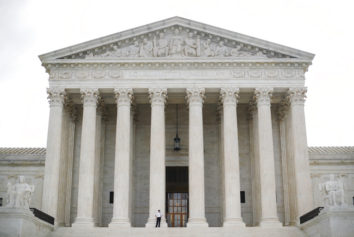
The case being considered is Fisher v. University of Texas. It involves Abigail Fisher, a Texas student who claims she was denied entry to the University of Texas because of her race. However, Fisher was a slightly above average student, who had a 3.59 grade point average, according to Slate. The Supreme Court ruled against Fisher in 2013, but a fresh claim is being presented to the justices.
Bollinger says that affirmative action programs are necessary to ensure diversity. He said Supreme Court Justice Sonia Sotomayor, a Latina, understands why these programs are so important.
“Justice Sonia Sotomayor has pointedly taken issue with Chief Justice John Roberts’ view of a post-racial America. In her dissent last year in a case reviewing the constitutionality of Michigan’s ban on affirmative action, she asserted that ‘the way to stop discrimination on the basis of race is to speak openly and candidly on the subject of race,’” said Bollinger. “In doing so, she gave voice to all who know through their personal, lived experience what it will take to build a truly integrated America.”
Roberts tends to believe that racism will go away if we simply ignore it. In a 2007 court opinion, he wrote, “The way to stop discrimination on the basis of race, is to stop discriminating on the basis of race.”
However, Bollinger argues there is clear evidence that race is still an issue in American society.
“Yet it cannot be lost on the Justices that, since they last ruled in Fisher in 2013, the nation has seen unmistakable evidence that structural segregation and discrimination persist in America: the shooting of nine black churchgoers by a white supremacist, cities in upheaval over police killings of minorities, and, most recently, college students from Connecticut to California protesting their experience of race on campus,” Bollinger writes.
Bollinger points out that during the first half of the 20th century, many government programs deliberately excluded Black people, creating imbalances that still persist.
“My colleague, Professor Ira Katznelson, documents the deep origins of America’s structural racism in his book, When Affirmative Action Was White,” said Bollinger. “He explains how multiple policies of the mid-twentieth century, from Social Security and the G.I. Bill to new labor laws and home-mortgage assistance, promoted the modern American middle class. In total, more than $100 billion was spent on this government-led social transformation: more than six times the amount dedicated to Marshall Plan aid in war-torn Europe. But, by design, most blacks were left out, and, Katznelson concludes, the ‘Gordian Knot binding race to class tightened.’ It remains so today.”
Rolling back affirmative action programs has a negative effect. In 1999, then Florida Gov. Jeb Bush signed Executive Order 99-281, which eliminated affirmative action in college admission and government contracting. Bush replaced it with One Florida, which guarantees admission at state universities to the top 20 percent of each graduating high school class. According to Mother Jones, Bush’s decision caused Black freshmen enrollment to drop from 18 percent in 2000 to 13 percent in 2013. The move also permanently soured relations with Florida’s Black community and was described by The Sun-Sentinel as the “most grievous blunder.”


